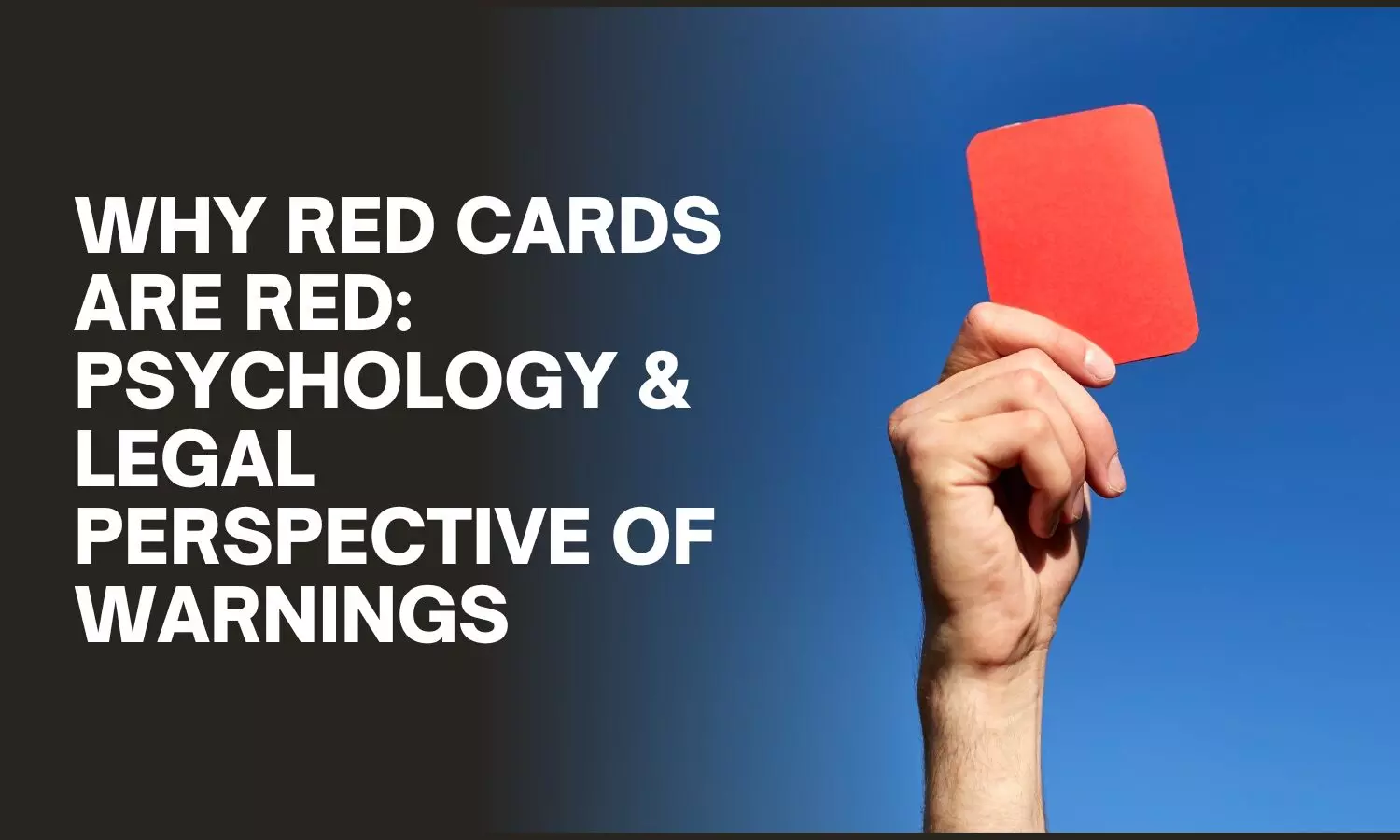Why Red Cards Are Red: The Psychology and Legal Perspective of Warnings
Discover the psychological, natural, and legal reasons behind the universal use of red as a warning signal—scroll down to read more!

The use of red cards in sports not only serves as a psychological warning but also carries significant legal implications. In many sports, official regulations mandate the use of red cards to indicate serious infractions, ensuring standardized enforcement of rules and maintaining fair play.
Historical Connection of Red to Danger
Red has always been a dangerous, powerful, and urgent color. It was ancient, and it was intense. People knew it was ancient and fierce, and they associated it with fire, blood, and survival instincts. Red was a warning color in nature, often a bright color that warned of predators or poisonous plants, and hunters in nature respected red as a warning. This primal association became so deeply embedded in the man's consciousness that he treated it like a modern enthusiast following a cricket betting line and keeping track of every twist and turn with precision and extra awareness. It’s a realm that whips up quick decisions and razor focus, where color has always meant instinctive responses.
Red continues to dominate modern society. Stop signs, hazard lights, and emergency signals worldwide share this hue. Visibility is not just about visibility; it is about getting an instant response. The idea was simple: That flash of color should make us stop and think carefully about what comes next. The same logic applies in sports, too. Warning cards deliver a message no one can ignore: Stop.
Emotional Responses Triggered by Red
Red is not just pretty; it grabs hold of your heart. This powerful shade is an emotionally charged warning tool. It is difficult to overstate the psychological impact of that. Here's how color influences us:
- Heightened Attention: Everything else fades away and is pushed out of focus by red demands.
- Increased Tension: It causes stress responses, making our instincts sharper.
- Instant Recognition: No words are required to convey the meaning of red.
That's why warning cards feel so different. All players, fans, and referees think it. And it's a color that commands.
The Role of Color Psychology in Sports
The sport is not about decoration but strategy. Every shade is used, from uniforms to signals, for a reason. It's a big part of the game's dynamics, much like how platforms like Melbet Instagram are as fans are being brought closer to the action, seeing these strategic plays and emotional moments in full detail. It is about why players think, act, and react in a way that they do. And you can feel it in coaches, referees, and fans.
How Red Influences Players' Behavior
Players are attuned to red. It fires up their instincts when they see it. A card doesn't just stop the game—it changes our psychology. This penalized player feels immediate tension, sometimes even frustration. Meanwhile, their teammates take extra caution because they're one step away from losing a player.
It's interesting that red also affects the opposing team. Studies suggest that color can intimidate, subtly improving the confidence of the unaffected but penalized player. It's a chain reaction. This color isn't only a signal; it's a tactical element that tips the mental game. It becomes a psychological battlefield.
The Effect of Red on Spectators
The crowd instantly responds when a referee raises a card. It's emotional—anger, excitement, and often relief. A warning card adds drama because you create moments that fans forget about but remember long after the game ends. It's more than a call; it's an experience.
This goes beyond the stands. Betting odds shift once cards are handed out, and people get heated up debating among commentators and the fans. It's very contagious when the energy red injects into the game. This color takes you in, and it gets a reaction out of everyone who sees it, announcing their presence in bold.
The influence of red cards goes beyond emotions and game dynamics—it also has legal and regulatory implications, particularly in the world of sports betting. Since betting markets can be significantly affected by disciplinary actions, many jurisdictions enforce strict regulations to prevent match-fixing and ensure fair play. Governing bodies like FIFA and national football associations monitor referee decisions closely, addressing concerns over potential manipulation. Additionally, legal frameworks dictate how bookmakers adjust odds in response to red cards, reflecting the broader societal responsibility to maintain integrity in both sports and betting industries.
Cultural Perspectives on the Color Red
Red is a language that unifies us, but its meaning changes by place. In China, it is a symbol of prosperity and good fortune. It energizes, inspires, and connects with tradition. In Western cultures, color moves towards power and intensity. Bold, commanding, and sometimes associated with big-time moments like sports penalties, is a bold, commanding word.
Red is a powerful symbol in many African cultures and means life, vitality, and caution. This fiery shade deserves respect across the planet. Red always makes us, whether inspiring joy or signaling warnings. It is a color that crosses emotion with action, a truly global force in human psychology.
Red Cards in Sports: More Than a Signal
The card in sports is more than a warning; it’s a psychological choice. The bold color grabs attention, strengthens emotions, and changes the game dynamics. A red card is a message to stop, reminds players of the rules, and adds drama to every moment.

